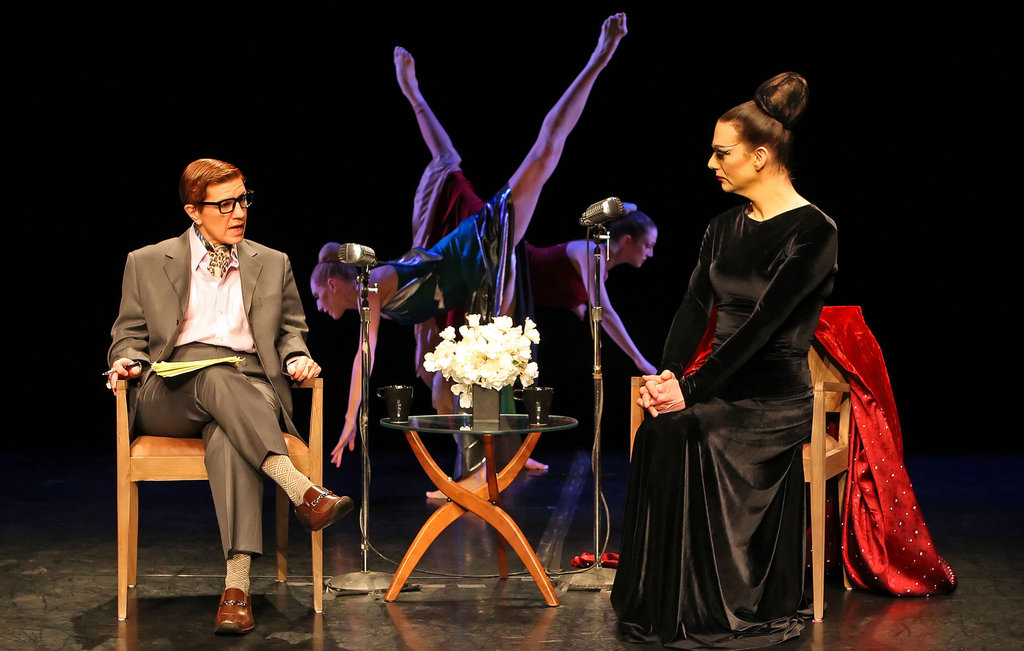Continuing her series on navigating the “business” of dance, Kalila Kingsford Smith interviews Amy Smith, Co-Founder and Finance Director of Headlong Dance Theatre, faculty member of the Headlong Performance Institute, former board member of Dance/USA, and teacher/mentor to many artists in the Philadelphia dance community.
Why did you choose Philadelphia as your home base for Headlong? What was the dance scene like at the start of your career?
Andrew Simonet, David Brick and I were throwing out ideas about where to build our company. We didn’t want to be in New York—it was too expensive and had too many other artists. It wasn’t the kind of lifestyle we wanted to have. A friend living in Philly said, “Come check it out—it’s great, it’s cheap, it’s small, it’s gritty but it’s friendly.” So we visited, fell in love with the city and decided to stay.
The dance scene was pretty small in the early ’90s, but there were some interesting artists here that we were excited to be in community with. There were many peer-to-peer structures where artists were supporting each other and working together. Since then the community has grown enormously; there’s been a massive influx of dance and theatre artists to the city for the same reasons that brought us here.
What were the first steps towards building Headlong?
For the first few years, we were really focused on making work and showing it wherever we could. We were trying to build an audience, a reputation, and a basis for our creative practice. Once we decided to start a nonprofit, we realized that the three of us should split the administrative tasks of running the business. I took over the financial piece, David the public relations, and Andrew the fundraising. We couldn’t afford to hire people, so we figured out how to do it ourselves. This was sometimes hard to communicate to funders—that we were both the artists and the highly skilled professional administrators. But it was good for us because we were using our creative skills and collaborative interests to create an organizational structure that made sense to us.
How did you gain the financial experience that would help you run Headlong?
My first day job when I moved to Philly was working in the management office of an apartment building. That got me started with bookkeeping and financial tracking. For a little while, I worked for my uncle, a white-collar private investigator in New York. That was really interesting! I wasn’t doing any investigative work, but I was helping him run and grow the business. I learned a lot about business planning and financial management—QuickBooks, Excel, etc. It was my moneymaking day job, but I also knew that I could apply this skill set to running a company.
What was it like starting up your nonprofit at that time?
In 1996, the environment was really different—I often tell artists that they shouldn’t start a 501c3 now. It was much easier to become a nonprofit in the ’90s. The oversight and governmental reporting requirements were a lot less. There were very few foundations for funding entities that would support groups or individuals that didn’t have 501c3. Now the field has changed. A lot more grantors are embracing the notion of funding individuals and groups through fiscal sponsorship, which was unheard of in the ’90s.
What were some unforeseen challenges as you were starting up your career? How did you address them?
It’s always hard to figure out the balance between art-making and paying attention to the business-administrative side. When it gets really imbalanced, it feels terrible. I spend two weeks getting a grant ready and spend absolutely no time in the studio. The cost of being an artist is that I end up sitting in front of the computer for days on end.
I’ve started to look at the year-long calendar as a whole to schedule rehearsals even though I don’t yet know what I’m going to do and who’s going to be there: I just schedule studio time. But it’s difficult to maintain the balance. There’s the administrative work, the artistic work, and also family life. All of those things are demanding and deserving of attention—they’re all constantly pushing and pulling.
What advice would you give yourself as a dancer just starting her career?
I would tell myself to move to Philadelphia, or another cheap city, where I can work 20 hours a week and support myself. I would tell myself to take time off. Take down time, vacations and planning time—just to remind myself how important it is to slow down and look at the big picture—do some long-term planning.
Is there anything else you’d like to share?
My personal mission is to help other artists increase their financial literacy. I see a lot of artists leaving the field, not because they’re not good artists, but because of the difficulty of running the business of being an artist. I feel compelled to share what I know with the community so I can help younger artists figure out those issues and questions. I’m worried because they don’t teach this enough in schools. I’m always trying to advocate for university programs to teach students not just to be good dancers or choreographers but also to be able to build a sustainable life as an artist.See the first article in this series about the “business” of dance and how individuals’ careers can take shape here. If you would like to be interviewed for the series, please contact author Kalila Kingsford Smith at kalilakingsfordsmith@gmail.com.






